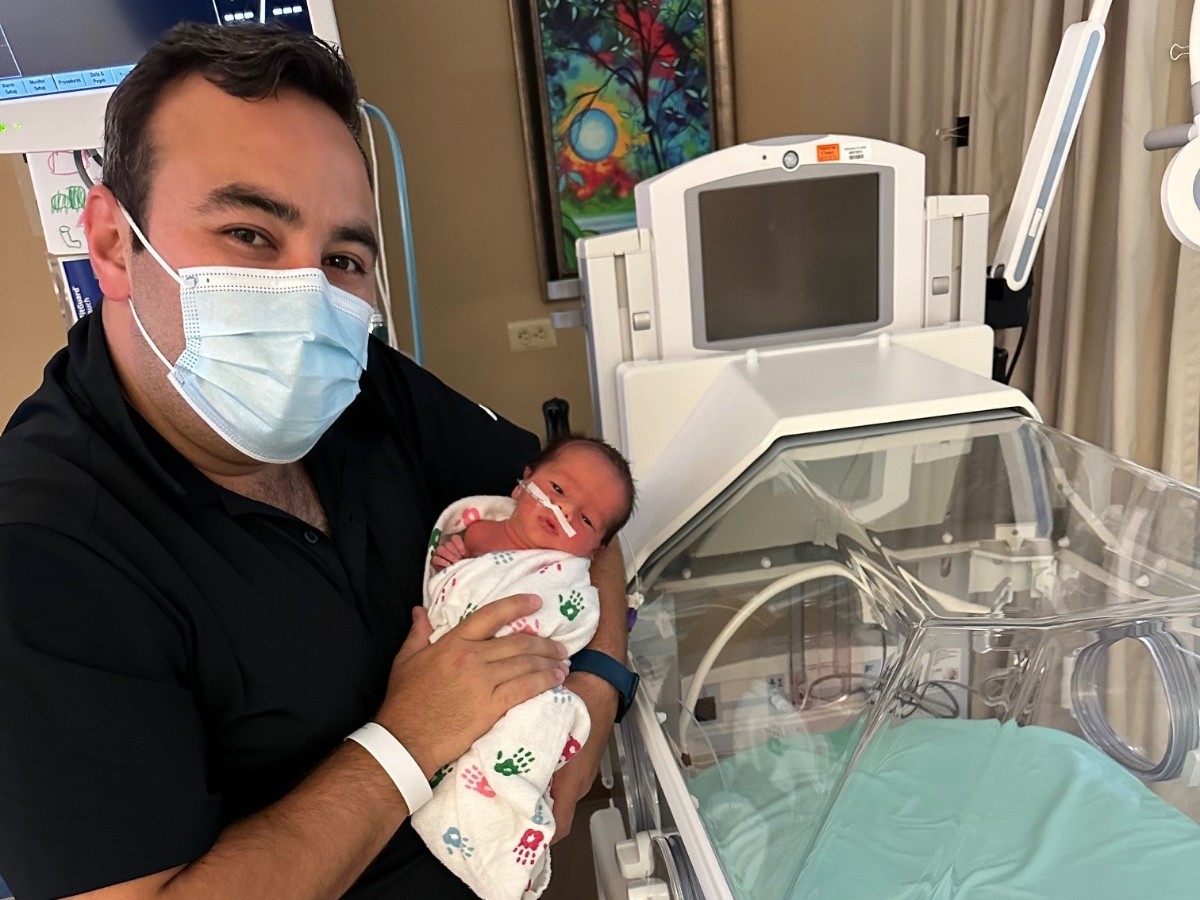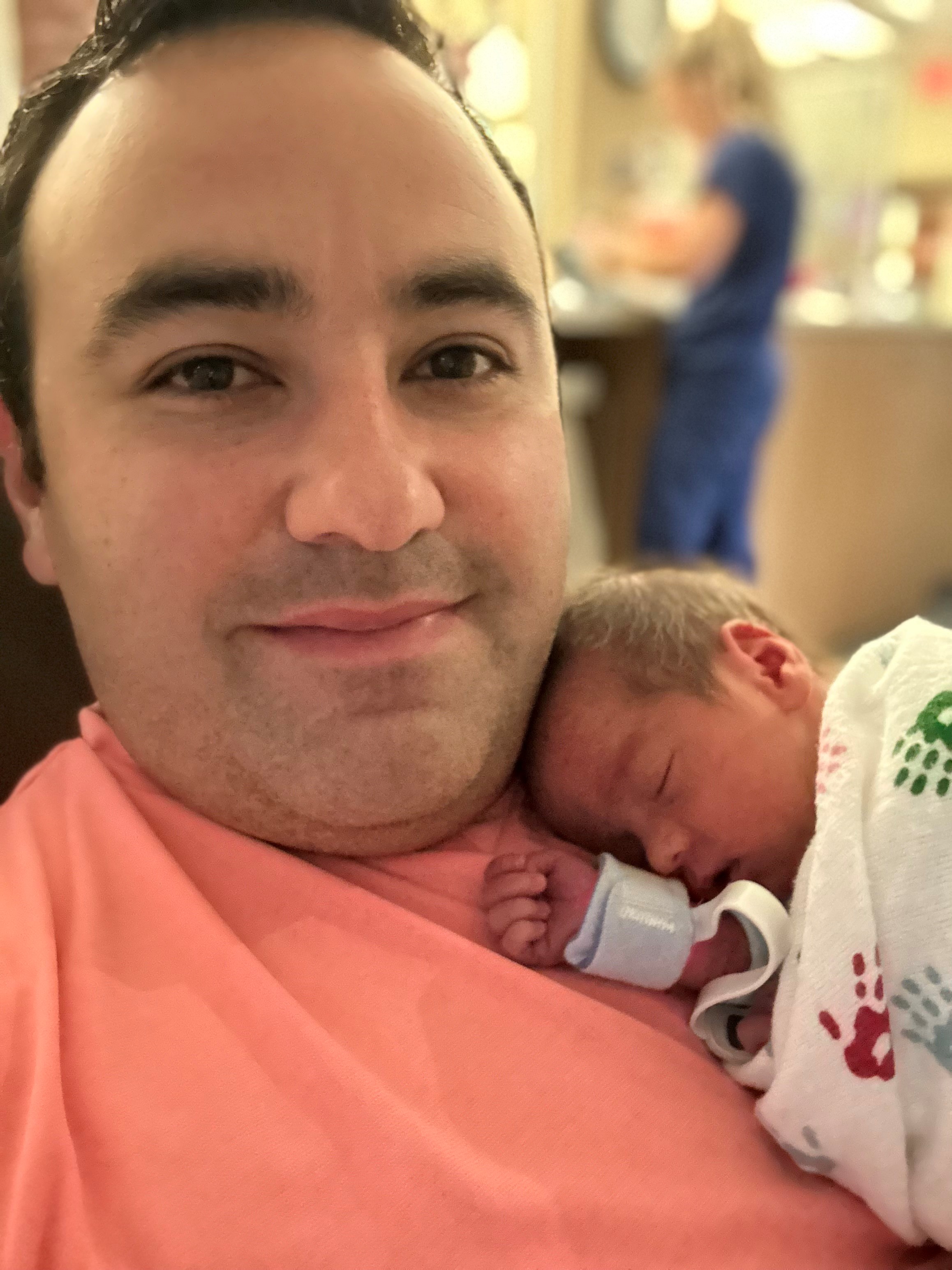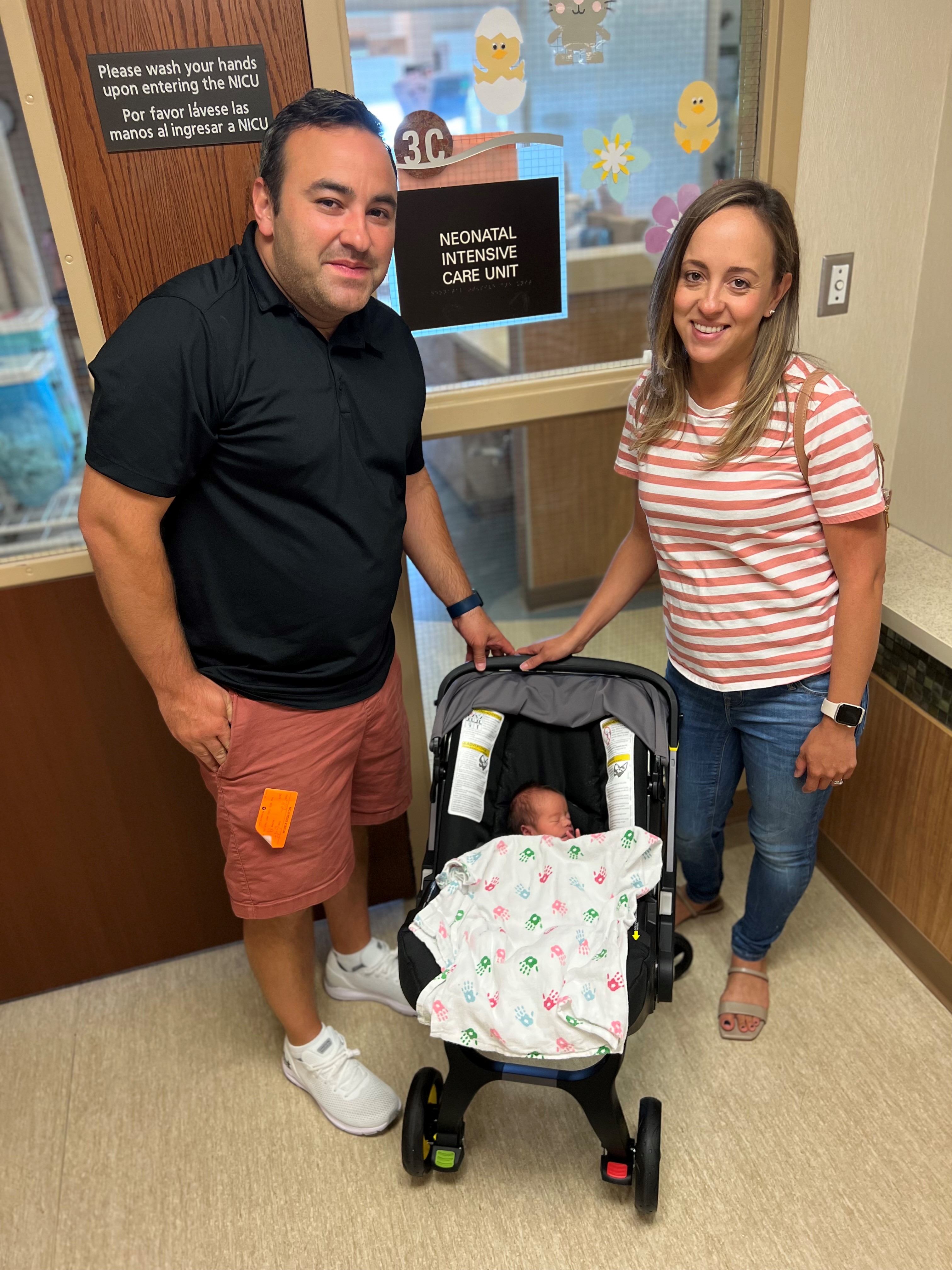Last summer, Eduardo Bueno and his wife, Ivon, were excitedly anticipating the birth of their third child in Waukesha, Wisconsin. Early one morning in June, Ivon woke up her husband and said, “I think my water just broke.”
Eduardo’s first thought: “This is seven weeks too soon.”
At the hospital, medical staff confirmed that Ivon was in labor. The couple was still processing the news when the lead doctor for the hospital’s NICU, or neonatal intensive care unit, began to explain that their newborn might have a difficult medical journey ahead.
The Buenos’ oldest child, also named Eduardo, who was 7 at the time, had briefly been in the NICU when he was born small for his gestational age at 38 weeks. This time, though, would be different. A baby born at 33 weeks needs additional support, such as help with temperature regulation, breathing, and feeding, that is not required for babies born at full term. The baby might need to be intubated to help with breathing, the doctor said. He might even need to be resuscitated after delivery. Now Eduardo and Ivon were frightened.
Their child was one of many who are born prematurely each year. In fact, more than 1 in 10 infants are preterm, defined as born before the 37th week of pregnancy. This translates to about 13.4 million babies worldwide in 2020, according to the World Health Organization.
Eduardo with his son, Emilio
“Most premature births happen spontaneously. They also can be influenced by factors including infection or health issues affecting the mother, such as high blood pressure or diabetes,” says Ashley Darcy Mahoney, PhD, a neonatal nurse practitioner.
Because a premature infant’s lungs are often underdeveloped, the baby may not be able to breathe yet on its own. Babies born early also can need help with feeding and regulating their temperature. “In the NICU, hospital staff work to ensure that babies have all the things they need for good respiratory and cardiac function, including adequate blood pressure, adequate fluids, electrolytes, and nutrition,” Dr. Darcy Mahoney explains.
Fortunately for the Buenos, their son was born well enough for them to hold him for a few minutes. They named him Emilio. He weighed just 4 pounds, 4 ounces, and his crying reassured them of his determination.
The medical staff moved Emilio into a Panda Warmer, which has an integrated heater, scale, and X-ray tray, to stabilize his temperature while they assessed him. Then they transferred the baby to a Giraffe OmniBed Carestation to keep him stable as they moved him to the NICU. The incubator would support Emilio and allow him to put all his energy into growing and developing in the days ahead.
Throughout the process, Eduardo, a GE HealthCare plant manager, couldn’t help but notice that nearly all the machines, including the patient monitors and ultrasound systems, were made by GE HealthCare. He told the nurses about his 16 years with the company. “Seeing this equipment being used on my little one is what my family and I needed to feel reassured that our baby couldn’t be in a better place,” he says.
The next few days were challenging. After Ivon was discharged from the hospital and the couple went home, Eduardo would wake up at 4 a.m. to be in the NICU for Emilio’s 5 a.m. feeding. Around 9 a.m., he would go home to be with his two older children and Ivon would spend the rest of the day at the hospital. They bonded with the other NICU parents and shared the emotional highs and lows of their experiences.
Eduardo and Ivon with their son Emilio
“The nurses were in love with Emilio,” Eduardo says. “They would come and tell us everything he did overnight. He had a team truly rooting for him.”
“The nurses also encouraged the parents to participate in Emilio’s care — part of a broader shift in neonatal care toward allowing families to be more involved,” Dr. Darcy Mahoney explains. “Parental touch and the sounds of their voices are really important components of child development,” she says. “Talking, reading, and singing to babies throughout their time in the NICU have important implications for what their long-term outcomes could look like when they reach school age.”
“Technology has allowed parents to be more connected to their infants,” Dr. Darcy Mahoney says, “through cameras in patient rooms and live updates on their progress. And technology is making it easier for hospital staff to care for premature babies.” For example, Dr. Darcy Mahoney says “algorithms in software for infant warmers, incubators, and vital sign monitors can now catch small changes in heart-rate variability or temperature stability that might signal increased stress in babies so that it can be acted on before they become larger problems. “
GE HealthCare focuses on supporting care to send moms and babies home healthy. More than 10 million babies in the NICU have used a GE HealthCare incubator and warmer. The Corometrics maternal-fetal monitoring system monitors approximately 11 million births per year, or about 30,000 births per day.
GE HealthCare technology is designed to support babies at each stage as they develop through infancy. And as medical advances have allowed premature infants to survive at younger ages, technology has protected them at their most vulnerable moments.
Thanks to the support of his care team and his parents, Emilio improved rapidly. Within a few days he progressed from feeding through a tube to being able to drink on his own. To everyone’s surprise, he was released from the hospital after just 10 days. Eduardo remembers one of the doctors saying it was the first time he could recall a premature infant being ready to go home before reaching 35 weeks. One of the family’s happiest moments was introducing Emilio to his older brother and his sister, Sofia Ana, 5 years old at the time.
Emilio
The experience reminded Eduardo that each piece of equipment he works on is not just a machine, but a crucial technology used to care for a person who is deeply loved.
“We are employees for sure, but we’re also people first,” he says. “You never know how important what you do is until you find yourself on the patient side, when you realize what you’re doing on a daily basis is truly saving someone’s life. It makes my purpose even stronger.”




